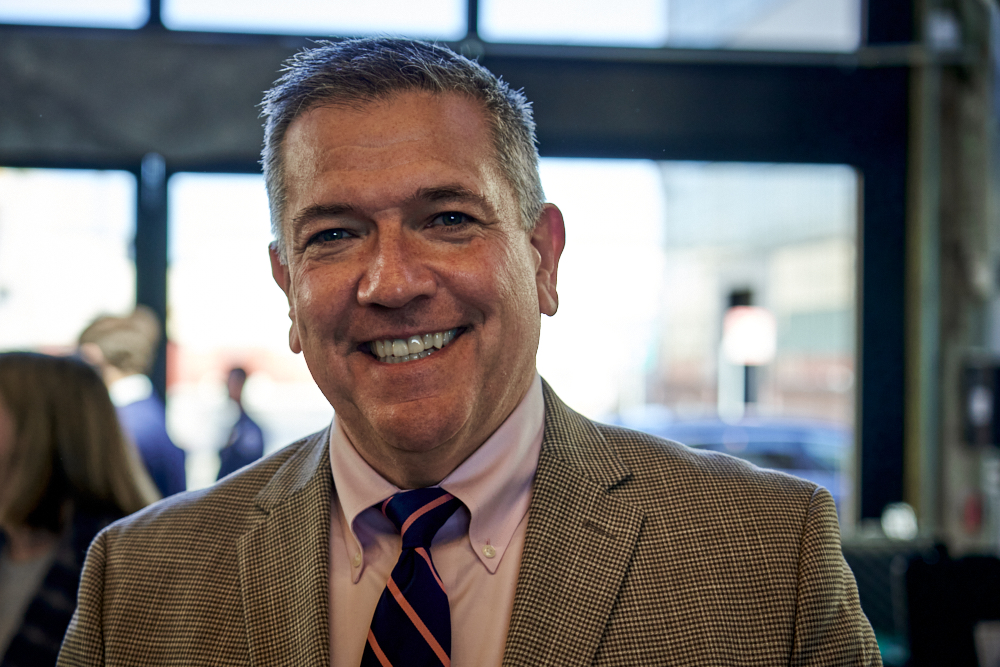The Board of Supervisors’ Budget and Finance Committee voted Wednesday to move forward with plans for a 42-unit building in the South of Market district to become permanent supportive housing for transitional age youth, ages 18-24, who are leaving homelessness.
But what should have been a consensus plan became controversial at the last minute when Sup. Matt Dorsey insisted that tenants be subject to eviction if they use or possess illegal drugs.

The lease agreement that the supes approved includes, at Dorsey’s insistence, “provisions that expressly cite residential lease terms that violating drug-related laws ‘may be grounds for termination of tenancy.'”
Under state and federal law, young people who are in foster care age out at 18, and are left to fend for themselves. Nearly 70 percent of TAY in San Francisco are currently unsheltered and 40 percent identify as LGBTQ+, as of the 2024 Point in Time count.
In May of last year, Mayor London Breed announced a proposal to purchase the building. The Board of Supes unanimously approved the purchase. The contract with the lease provider, Abode Property Management, will begin on Jan. 7, 2025. Residents are set to move into the space in April.
“[We’re] really excited to bring new youth housing to SoMa, in a way, and in partnership with this beautiful community,” Emily Cohen, deputy director for communications and legislative affairs at the Department of Homelessness and Supportive Housing, said at the hearing.
The vote was highly anticipated, as the $14.2 million dollar project has been at the heart of San Francisco’s debate on how best to reduce homelessness and drug addiction in the city.
The project could have been approved last week, but it was delayed because Dorsey insisted that HSH codify a drug-free lease provision in the Grant Agreement and Ground Lease for the property.
Because of Dorsey’s efforts, now all residents must sign an acknowledgement upon move-in that the space prohibits “illegal drugs.” If a resident violates these drug provisions their lease can be terminated.
In a statement released on Twitter, Dorsey said, “I am proud of the unprecedented deal we were able to secure for this project.”
Dorsey, who is in recovery, has acknowledged that while he was a well-paid senior civilian employee at the SF Police Department, he relapsed and used illegal drugs. He did not lose his job, and was not evicted from his apartment in SoMa.
While advocates spoke for nearly an hour at the meeting in support of the site, many critiqued the drug-free provision, instead supporting a housing first response to homelessness. That response prioritizes the “unconditional provision” of getting unhoused individuals off the streets, and then later focusing on “personal stability,” as San Francisco SafeHouse puts it.
Milo Ernburg, a SoMa resident and pediatric nurse, said “I’ve done work at Maria X. Martinez clinic, so I’ve seen the extent of the harm that street homelessness does to people physically, emotionally, socially, and I am really excited to see a project like this come forward… I hope that in the future projects can be inclusive of people who use drugs, because everybody in our community deserves housing, including people who use drugs.”
Lane Casey, director of development and communications at LYRIC Center for LGBTQQ+ Youth said: “Housing is not just a basic need. It’s a human right. We’ve seen the housing first model work wonders time and time again, yet here we are, still having to fight tooth and nail for permanent supportive housing. The truth of the matter is simple: young people in San Francisco deserve housing. LGBTQ+ youth deserve housing. Youth of color deserve housing. Youth fleeing violence deserve housing. Undocumented youth deserve housing. All young people deserve housing.”
A few TAY showed up to the meeting in support of the site. Lee, who described themself as a “queer youth” in San Francisco, shared their experience of being housed by LYRIC’s housing navigation program. “If the city wants to show its commitment to its youth, it should keep moving forward with these projects because no youth should ever start out or end up without a safe home,” they said.
For some, expanding supportive housing now, especially for queer youth, has greater implications as Donald Trump prepares to take his second term in the White House. Carolina Osoria, a program associate at the Transgender District, testified: “As we live in unprecedented times and are entering a new administration, highlighting this issue and supporting our youth during this time would set precedent for surrounding cities, counties to implement such protocol for them to support at risk youth.”
Gael Isaiah Lala-Chávez, executive director and president of LYRIC, said: “We’re in an interesting moment right now, where San Francisco can be the city we all think that it can be. That is a city that is going to protect our must vulnerable young people that are fleeing family rejection, that are fleeing unsafe conditions.
“We know that this new administration is only going to get harder. Today, and moving forward, this is the moment for us. We are going to show up for young people. We are going to be that city that everybody looks up to us as.”




